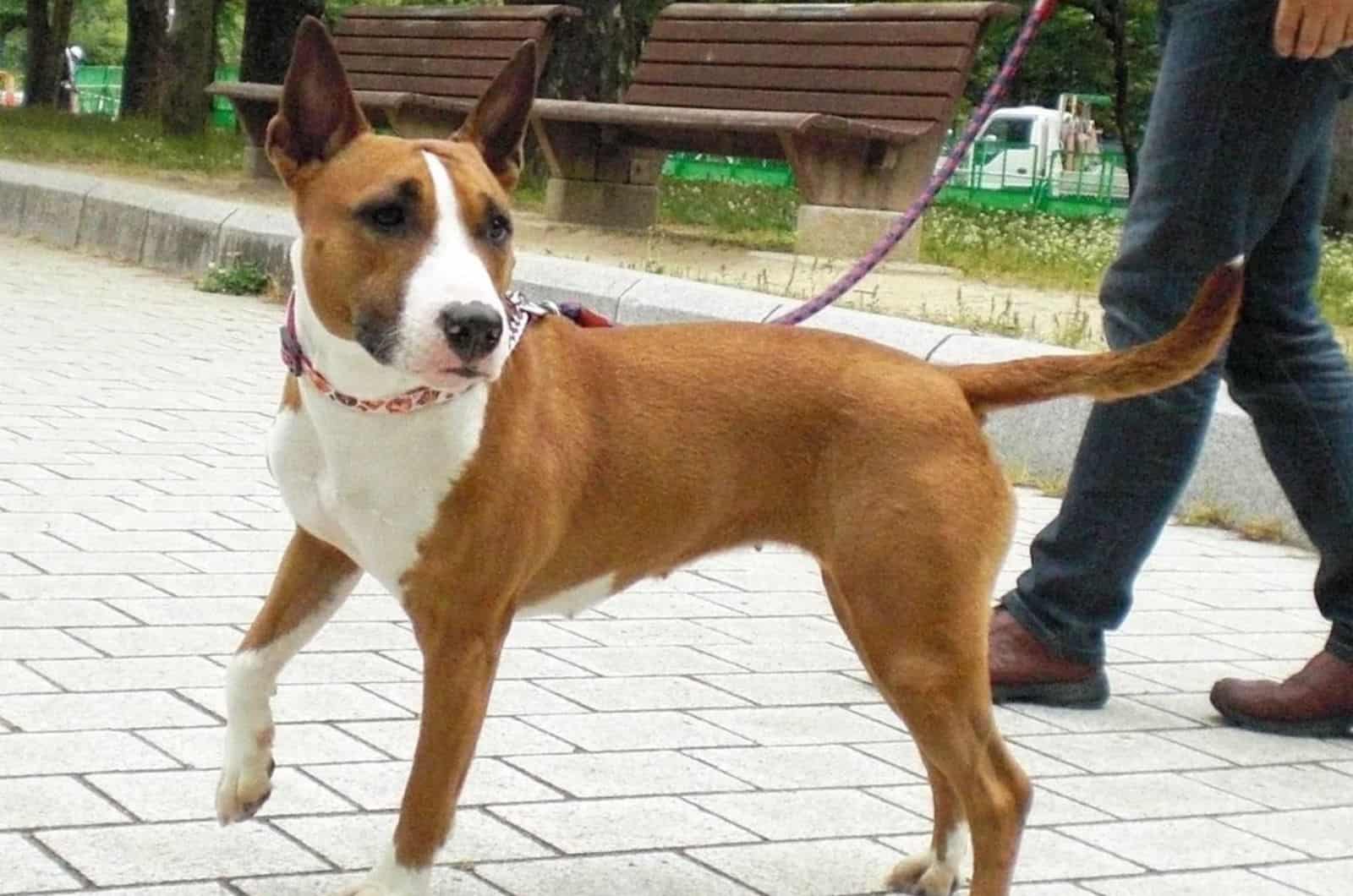Some might say that all Terrier breeds come with a certain dose of aggressiveness. However true that may be – the Bull Terrier Pitbull mix represents nothing but sweetness, loyalty, and affection.
These medium-sized canines come from two extremely active and playful dog breeds, which makes them perfect for sporting families and people who enjoy outdoor activities.
Their sassiness and sometimes mischievous, yet funny behavior make them instant mood fixers, which is why this mixed breed is highly favorable among families all over the world.
What Is The Bull Terrier Pitbull Mix
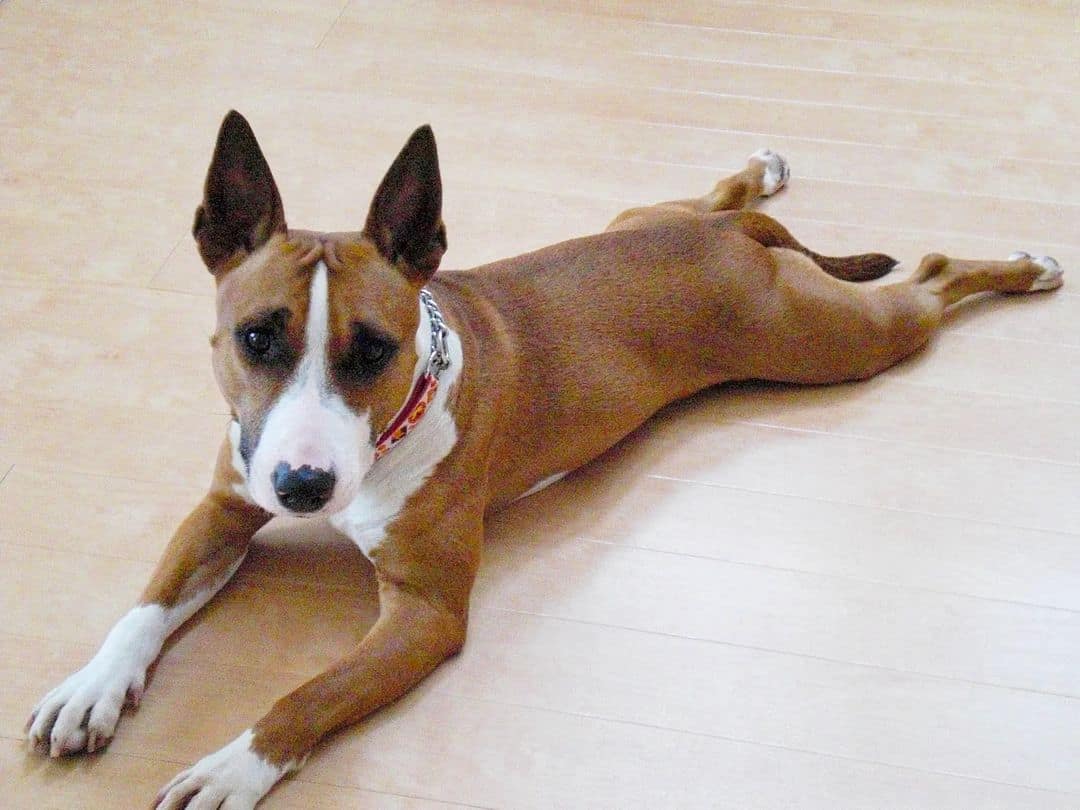
The Bull Terrier Pitbull mix happens to be a mixed breed of a Pitbull (or the American Pitbull Terrier) and a Bull Terrier. Both of these parent breeds have English roots as they were initially bred in England for animal and dog fighting.
Although having a violent and cruel history, these purebred dogs are not aggressive by default, but by improper and hazardous breeding.
Luckily, these canines are nowadays bred for family purposes as both Pitbulls and Bull Terriers can be found in households all over the United States.
Unlike other Terrier and Bulldog breeds, these pooches get along with all family members (including small children) just fine. Generally, all Bull Terrier mixes represent a true joy among owners as these canines are playful, charming, and loyal to their families.
However, the breed may be aloof with other pets as both of its parents have a natural high prey-drive.
It is almost impossible to predict the behavior of a Bull Terrier Pitbull mix without previous digging into the history of its parents, so the best way to introduce this energetic dog is if we start from there.
Parent Breeds
If we take into consideration the history of both Pitbulls and Bull Terriers, we can say that their offspring, the Bull Terrier Pitbull mix, is a quite interesting hybrid dog.
Generally, Bull Terrier breeders describe this pooch as charming, intelligent, and stubborn at times. However, these egg-headed puppies, if socialized from an early age, represent a true joy to their owner.
On the other hand, Pitbull canines are often misperceived and misrepresented as aggressive, hazardous, and unpredictable, but the truth is these magnificent beauties are nothing but love-seeking pets.
History doesn’t do good to these breeds, as both canines were initially used for animal fights and bear baiting. Eventually, these cruel sports were prohibited in England, and the breeds found their refuge in English households.
Now, in order to have a clearer image of these two powerful dogs, let’s meet each of them individually and see what they are made of!
American Pit Bull Terrier
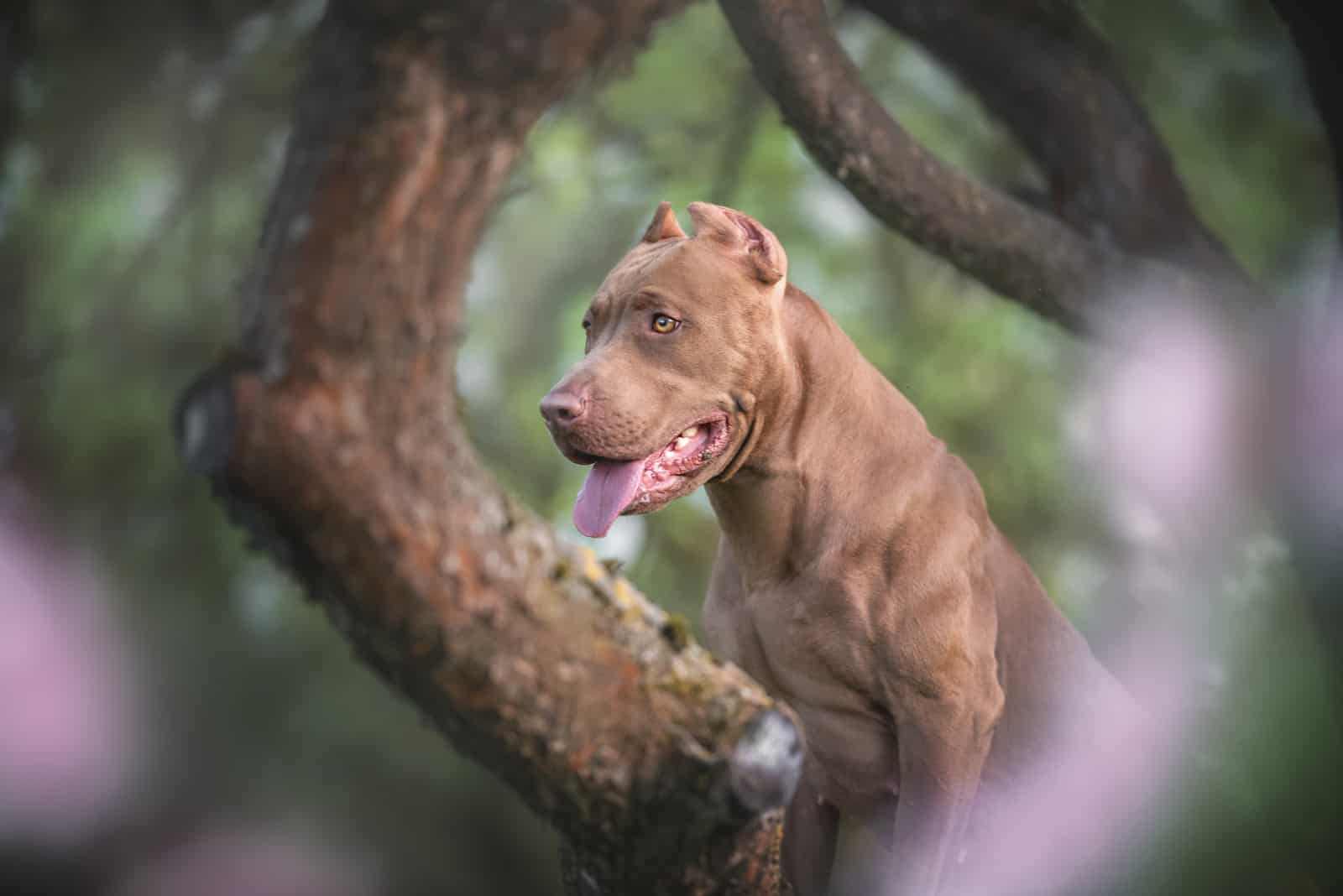
An American Pit Bull Terrier (APBT), or popularly known just as a Pitbull, is not an official breed of the American Kennel Club. Unlike American Staffordshire Terriers, these pooches are only recognized by the United Kennel Club.
Aside from American Pits, Staffordshire Bull Terriers and American Bulldogs are also known as Pit-type dogs.
Read More: American Bulldog Pitbull Mix: All About These Sweet-Hearted Dogs
These medium-sized pooches date back to England, where they initially served as fighting dogs and bear baiting dogs.
Just like their Bull Terrier counterparts, they were originally used for animal cruelty, which is why many people consider the Pit breed as violent and aggressive to this day.
However, the aggressiveness in these dogs derives from improper breeding as no socialized Pit puppy will display aggressiveness towards their owner or a stranger. That’s why these canines are not ideal guard dogs, either.
When it comes to their size, Pit canines stand between 17 and 20 inches in height, while their average weight revolves between 35 and 60 pounds. Females are somewhat smaller, though.
They have a short, smooth coat that sheds moderately, which is why they require weekly brushing. Their coat comes in various color patterns, of which the most popular ones are: black, fawn, brindle, tan, red, gray, white, and blue.
Pit puppies have a high activity level, which is why they need at least one to two hours of exercise during the day.
They are not recommended to be left without a leash in dog parks as they have a high prey-drive, and they do not tolerate smaller animals, like Golden Retrievers or Poodles.
Owners need to work on their Pits’ mental stimulation actively as these canines get bored easily. Chew toys for Pitbulls are an excellent way of entertaining your puppy and keeping it from scratching furniture.
Still, they make great family additions, even to families with small children. However, all Pit puppies require early socialization and firm leadership, which is why the breed is not recommended for first-time dog owners.
Bull Terrier
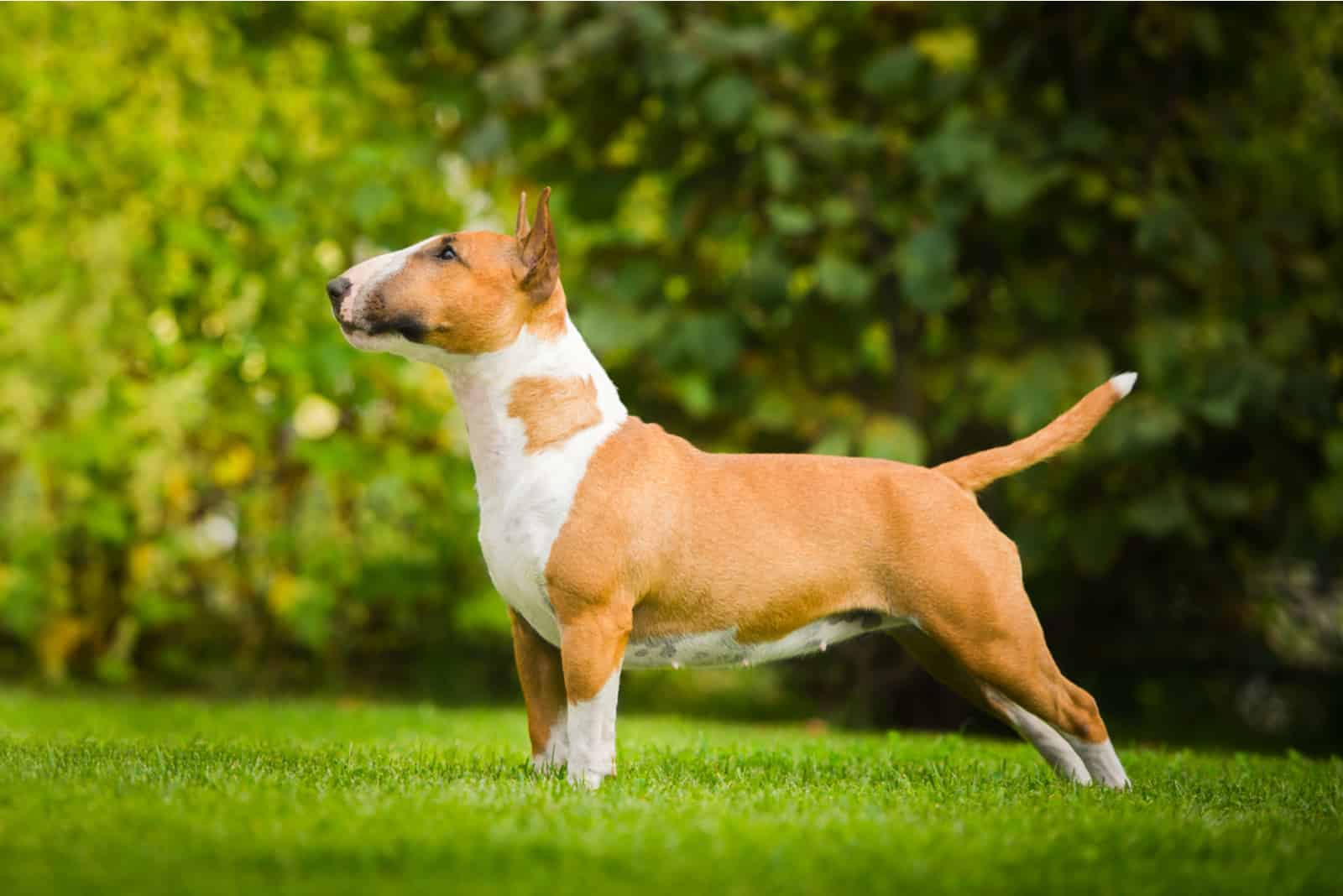
Just like Pits, these purebred canines have also been used for dog fights during the 19th century in England. History doesn’t do justice to these egg-headed canines as they are naturally affectionate and good family dogs.
The average Bull Terrier stands up to 22 inches in height, which makes this dog almost as equally tall as a Pit puppy. On the other hand, these canines weigh 50 to 70 pounds.
The coat of the Bull Terrier is generally short and smooth. Their coat color is generally white with other color markings, or solid with white markings.
The AKC recognizes black brindle and white, black tan and white, white and brindle, white and red, white and fawn, brindle, red, and several other color patterns.
These canines have a strong, thick body, and a long, egg-shaped muzzle. They are known as active and agile dogs, which is why Bull Terriers have been used in AKC conformation and agility shows.
Regardless of their high energy, these canines are still prone to gaining weight. That’s why the Bull Terrier feeding chart needs to be properly organized, and they need high-quality food.
Otherwise, these pooches can face obesity and heart problems, which is often triggered by improper lifestyle.
In terms of their temperament, these pooches are generally friendly, especially to small children. However, the breed is not recommended for novice owners due to their stubbornness.
The History Of The Bull Terrier Pitbull Mix
There is no clear evidence as to exactly when these hybrid dogs came to life. The history of its parent breeds is under the spotlight, though.
It is known that these purebred canines were initially used as bull baiting, bear baiting, and fighting dogs in England. These blood sports became illegal over time, and the puppies found their refuge in English homes.
Nowadays, both Bull Terrier and Pitbull breeders breed these puppies for family purposes as both of these dogs make great family additions. Still, due to their mischievous and stubborn nature, none of these pooches are recommended for novice owners.
Physical Appearance Of The Bull Terrier Pitbull
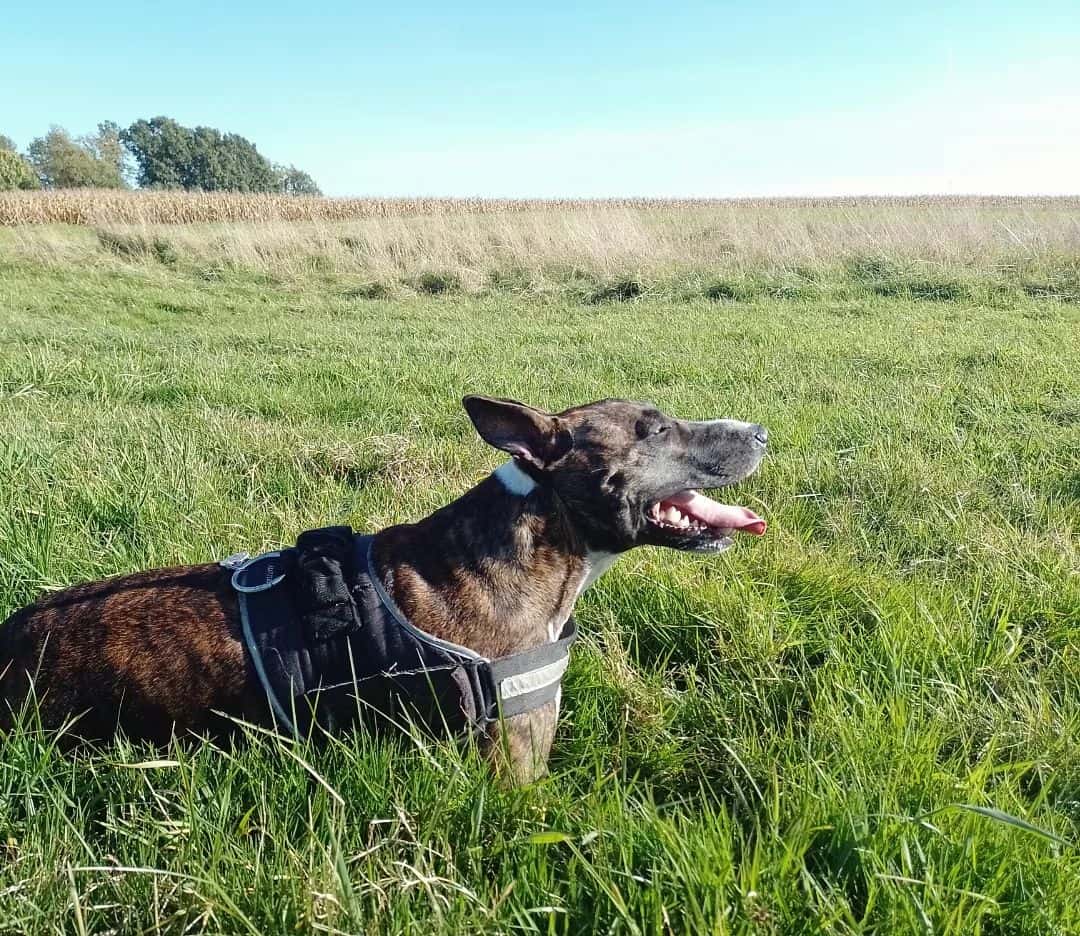
Generally, these crossbred pooches resemble their Pitbull parents as their head, nose, legs, and body are Pit-shaped. Both male and female Pit puppies have a bulked body and stocky legs, with a square head and pointy ears on top.
However, some puppies may have the ears of the Bull Terrier parent.
Furthermore, these canines are medium-sized as they stand up to 21 inches in height, and their weight generally doesn’t exceed 70 pounds.
Every Bull Terrier Pitbull mix has a short, smooth coat that sheds minimally. Due to their low-shedding potential, these canines are ideal for indoor life. However, they will need weekly brushing to preserve their neat, shiny look.
On the other hand, these pooches won’t need frequent baths. Bathing them every two to three months or so will be more than enough.
Due to their high activity level, these pooches will need regular exercise on a daily basis. One to two hours is the required amount of time to keep them healthy and mentally strong.
How Big Do Bull Terrier Pitbull Mixes Grow
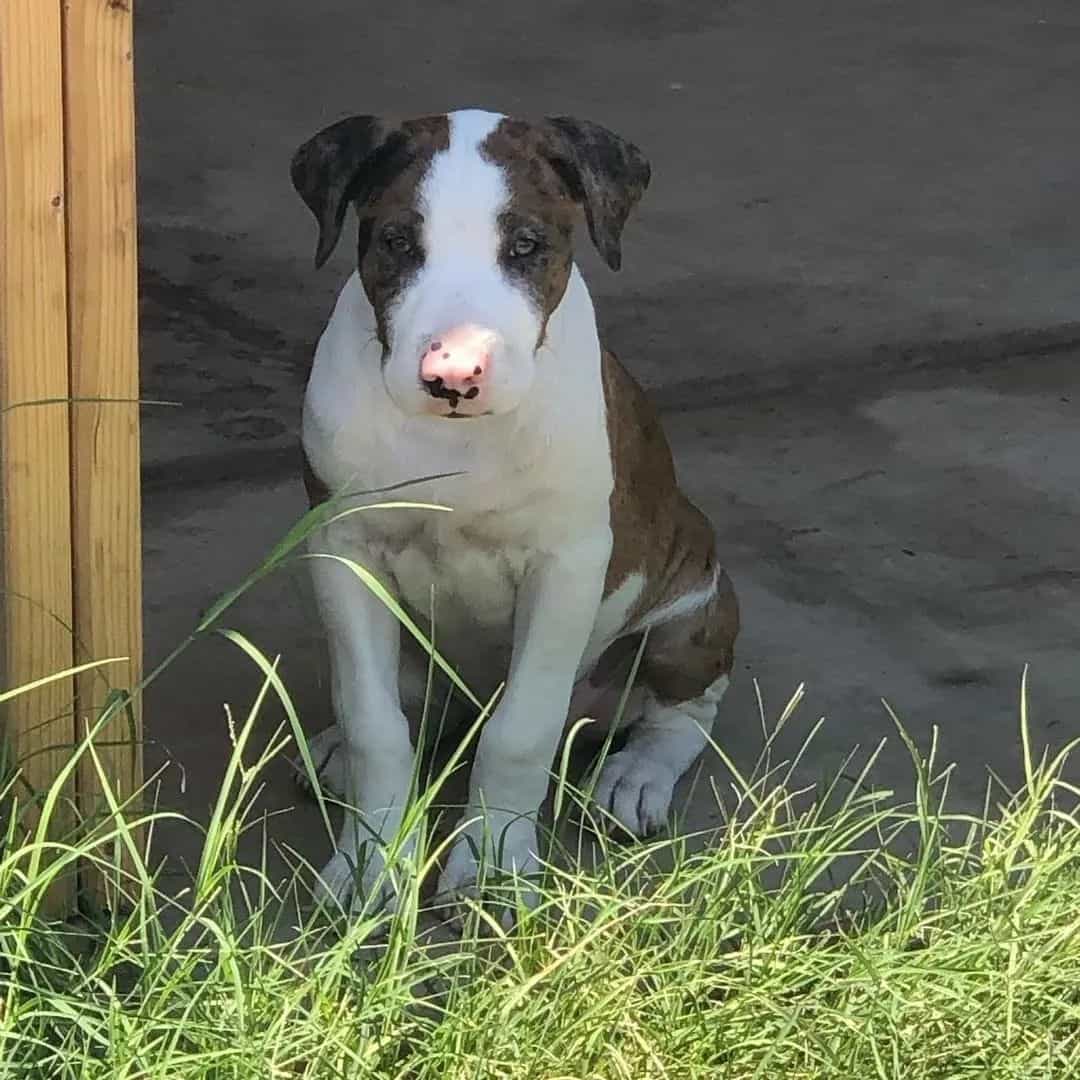
The average weight of a Bull Terrier Pitbull mix revolves between 60 and 70 pounds. On the other hand, these pooches stand up to 21 inches in height, which makes them medium-sized dogs.
Due to their medium size, Bull Terrier Pitbulls are ideal for indoor life. They don’t require as much space as some large breeds, like German Shepherds or Great Danes. They rather resemble Husky puppies in size.
However, there are several factors impacting the size of these pooches. The first is genetics.
Puppies that have a dominant Pitbull gene are more likely to be bigger than puppies with a dominant Bull Terrier gene. Furthermore, feeding is an important factor in the overall growth of this designer dog.
Improperly fed Bull Pitbulls have a tendency of being underdeveloped, which negatively impacts their health. That’s why owners need to take into consideration their puppies’ daily dietary needs.
The Pitbull raw diet is an excellent choice for their offspring, as long as it contains sufficient macro nutrients, such as protein, healthy fats and unprocessed carbohydrates.
On the other hand, these pooches shouldn’t be fed with low-quality foods, or table scraps, as they tend to gain weight pretty easily.
Lastly, health issues play a crucial role in a Bull Terrier Pitbull mix’s size. Puppies with hypothyroidism will probably have more growth issues than puppies with a normal thyroid gland.
Coat Type And Coat Color
Bull Pitbull mix puppies generally have a short, smooth coat that doesn’t shed that often. Unlike other medium to long-coated puppies, Bull Pitbulls are relatively easy to groom. They need a weekly brushing in order to stay neat and shiny.
Furthermore, these pooches will need a bath every three months, or even less frequently. They don’t require as much grooming as Poodles, Pulis, or other long-haired dogs.
Still, the puppy may leave hair trails all over the house, especially during the shedding seasons, which is why purchasing a dog bed for your pet wouldn’t be the worst idea.
When it comes to their coat colors, these pooches come in both Pit and Bull Terrier color variants. With that being said, you can find this hybrid at breeders in variety of colors, such as black, white, brindle, blue and red, fawn and tricolor patterns.
Any of these colors fits perfectly to this crossbreed, which is why choosing an ideal Bull Pitbull at a reputable breeder can be a sweet torment.
The Bull Terrier Pitbull Mix’s Temperament
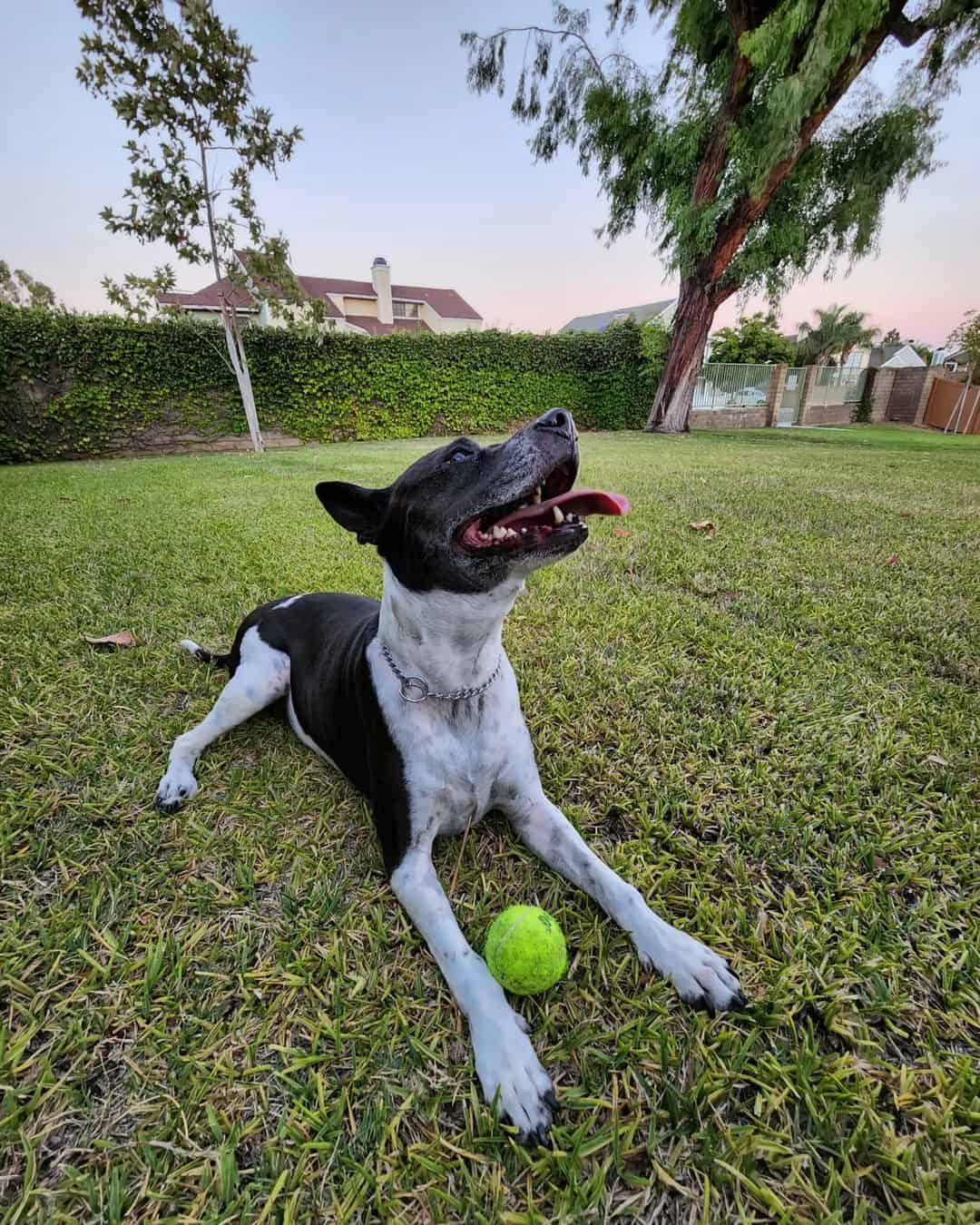
Unlike Rottweiler Pit mixes, these pooches are not aggressive by default as they get along with all family members well, including young children.
However, the breed needs early socialization training if you’re planning to keep it indoors (keeping it indoors is the only smart choice, though).
On the other hand, training them in obedience can be an overwhelming process due to their natural stubbornness and mischievous behavior. These canines get easily bored, which means that you will need new, creative ways of entertainment every day to keep them engaged.
Despite their tough look and their intimidating appearance, these pooches make one of the best dogs when it comes to housing. Even though they have lots of energy, they are highly careful with small children, and they won’t mind being teased or pulled by their tail.
Still, the breed doesn’t get along with other pets perfectly as they perceive smaller pets, like hamsters or cats, as prey. But, that’s not an inevitable position! As long as your puppy is socialized and taught proper manners, you should be at ease.
Socialization
Have you ever heard of a Pit dog named Sasha, that saved a baby from a burning house? That’s right. Pit puppies have a great parental instinct towards babies and small children, which makes their offspring, Bull Pitbulls, highly favorable in households.
Although they have been misperceived for years by inexperienced dog owners, or by random dog lovers, Pit puppies, as well as their Bull Terrier counterparts, make fantastic family dogs that will do anything to steal the attention of their owner.
Early socialization and obedience training are probably the two most important segments of a Bull Pitbull’s life. Unsocialized canines might have a tendency to display aggressiveness towards strangers or other pets.
On the other hand, if you miss out on obedience training, you may deal with a mischievous dog, which can be a long-term problem.
They may be mischievous and stubborn at times, but that’s just who they are. They are hardly entertained as these puppies always seek new ways of entertainment. With that being said, this puppy is not for everyone.
If you prefer a smooth, lazy lifestyle without much movement – look for a different breed instead. These pooches require active owners at all times.
Aggressiveness
There are several situations in which these powerful dogs can display aggression. For starters, if you didn’t socialize your pooch from puppyhood, you may deal with an aggressive dog in the future.
It is much harder to socialize an aggressive dog in the adulthood stage than during puppyhood.
It is highly encouraged to invite your friends over to your house during the puppyhood stage of your pet. That way, your Bull Pit will learn how to distinguish strangers from friends, and you won’t deal with behavioral outbursts in the future.
Furthermore, aggressive behavior in Bull Pitbulls may be a response to improper parenting.
These pooches need a firm, but loving owner who knows how to communicate with his/her puppy. If you yell, scream, or punch your dog, there is a pretty good chance that your dog won’t forgive you.
One of the most common problems these canines can have is separation anxiety. These are house pets, which means that they can’t stand being left out. Don’t ever leave your Bull Pit outdoors because that’s just not who they are.
They are used to being close to their owner at all times. If you have a busy schedule, or you’re just not that into a clingy dog – consider getting a different breed or don’t buy a dog at all.
Puppies that suffer from severe separation anxiety may be self-destructive and aggressive, even towards their owners.
Trainability
The best time to start with the training process of your Bull Pit puppy is right now! As soon as you purchase a dog from a breeder, you should start socializing with your pet.
In fact, puppies bought from reputable breeders will already come with a certain dose of socialization at eight to ten weeks of age.
However, in order to keep it that way, you should be consistent in the future, too.
The breed may be frustrating to first-time dog owners as these pooches are often stubborn and mischievous. They get bored easily, which is why you need to come up with creative ways to entertain your puppy.
Otherwise, the training process can be overwhelming and exhausting.
Luckily, these pooches respond well to positive reinforcement techniques, which is exactly why you should start from there. Try using interactive dog toys, healthy snacks, praise, and petting to interest your dog in training.
However, if you’re not an experienced dog owner – the recommendation is to start with a less demanding breed. Generally, Terrier breeds can be exhaustive to new owners as they require a lot of hard work and experience.
Bull Terrier Pitbull Mixes Around Children
For those of you who keep wondering whether these powerful dogs are good with children, the answer is – yes! If you’re inclined to buy a Bull Pit puppy, and you happen to have small children in your house – be at ease because these puppies get along with children amazingly!
In fact, due to their Pit bloodline, Bull Pits have a high parental instinct. They will especially act protectively around babies as they naturally feel the need to guard them at all times.
Pit puppies happen to be among the bully breeds that also make great family pets.
On the other hand, these crossbred puppies have a reasonable amount of tolerance as they don’t mind being occasionally teased, climbed on, or pulled by their tail.
Still, you should supervise the playtime between children and Bull Pits as these puppies sometimes love to play rough.
However, the bad news is that these pooches are not ideal dogs around other pets or other dogs. They love having their own space, which means that they will reluctantly share their kingdom with other fellows.
Still, early socialized puppies can be taught good puppy manners. Properly socialized Bull Pits will like an occasional playtime with other dogs, especially with dogs of other sex.
Health Issues Of The Bull Terrier Pitbull Mix
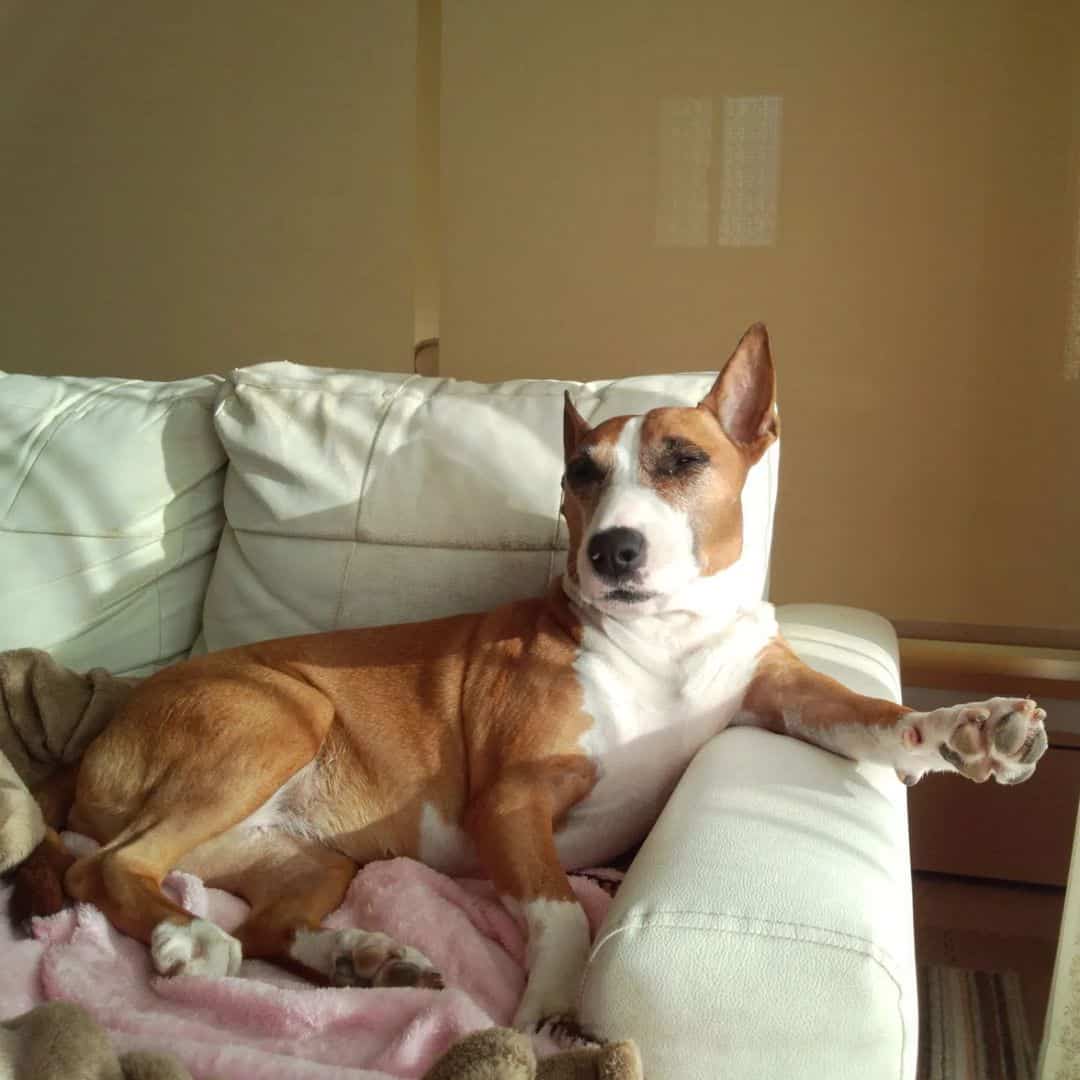
Neither Pits, nor Bull Terriers qualify among the healthiest dog breeds in the world, which makes their offspring, the Bull Terrier Pitbull mix prone to several major health problems.
Generally, all Bull Pits have a common tendency to develop hip dysplasia, heart disease, or cataracts. Some Pit puppies can face degenerative myelopathy – the disease that affects their spinal cord.
On the other hand, Bull Terrier puppies may deal with patellar luxation, various allergies, and kidney failure.
In order to keep these canines healthy, you will need to take into consideration two things: their lifestyle, and their eating habits.
These canines need at least one to two hours of exercise during the day to remain healthy, both mentally and physically. Mental health is as of equal importance to Bull Pits as their physical health.
Furthermore, try not to overeat your puppy as Bull Pits gain weight easily. Despite their natural high-activity levels, these dogs can suffer from obesity, just like their Bull Terrier parents. Always provide them with high-quality foods, timely meals and proper amounts of water.
On the contrary, you should avoid table scraps, junk food, and poor-quality dog food brands.
1. Hip Dysplasia
Hip dysplasia in dogs is a common issue in Bull Pit puppies. It represents the loosening of a hip joint, which causes a bunny walk in dogs. Generally, dogs with hip dysplasia are reluctant to jump, run, or climb stairs.
An owner should avoid overwhelming and high-intensity training in dogs with hip dysplasia, as it can lead to further injuries. Other symptoms related to this issue can be lethargy, lack of activity, disinterest, and severe pain in the groin.
The issue should be treated as soon as the first symptoms are noticed. Hip dysplasia is mostly treated with surgery. However, this procedure costs around $1500 to $3000, which is not cheap. Getting pet insurance is a great way to avoid high expenses in this regard.
Additionally, in order to avoid hip dysplasia in your puppy, you should always seek reputable breeders. Subjecting newborn puppies to hip and elbow evaluation is a standard process at reliable kennels, which is why the chances of getting a dog with this issue are low.
2. Heart Disease
Heart disease is a common issue in Pit dogs, which is why a responsible owner should keep their Pit’s growth chart within a normal ratio. Obese Pit puppies are generally more prone to heart failure than normally-weighted dogs.
Consequently, the Bull Pit puppy is prone to various heart problems, too. In order to avoid potential heart issues in your dog, you should take care of two things.
Firstly, never neglect your puppy’s exercise needs. Despite the fact that this is a medium-sized dog, Bull Pit puppies are extremely active by nature, which is why they need at least an hour, or two of exercise during the day.
Active puppies are generally less likely to be affected with heart disease, than lazy dogs.
Furthermore, designing a strict, well-organized feeding chart is a key to a healthy puppy. These canines need high-quality food to remain muscular and strong, but at the same time they don’t digest junk food well.
Heart disease in dogs should be treated as soon as you notice the first symptoms. Symptoms such as lack of energy, panting, fainting and collapse, lack of appetite, weight gain, coughing, and a swollen stomach are a red flag and they require an immediate vet intervention.
Aside from weight reduction and dietary changes, heart diseases in dogs are treated by drugs or surgery.
3. Cataracts
Canine cataracts is a hereditary issue that affects both young and older dogs. Luckily, the issue is not as progressive or as rapid as progressive retinal atrophy.
Although this issue is mostly a genetic matter, cataracts are also triggered by dog trauma, or nutritional imbalance. Obesity in dogs has a positive correlation with cataract occurrence, which is why you should take care of your puppy’s diet on a daily basis.
Cataracts are manifested by a cloudy lens in a dog’s eye. The most common symptoms of this issue are changes in the eye color, cloudy pupils, loss of coordination and balance, reluctance to climb stairs or to jump, general clumsiness, and constant rubbing of the eyes.
Puppies with cataracts can live a long and happy life as long as you provide them a nurturing, safe home. As cataracts can cause total blindness (especially in older dogs), try keeping the dog away from sharp edges, and avoid elevated spaces.
Cataracts are treated with surgery. However, the average price of this procedure is $2700 to $4000, which is not that cheap.
The Price Of The Bull Terrier Pitbull Mixes
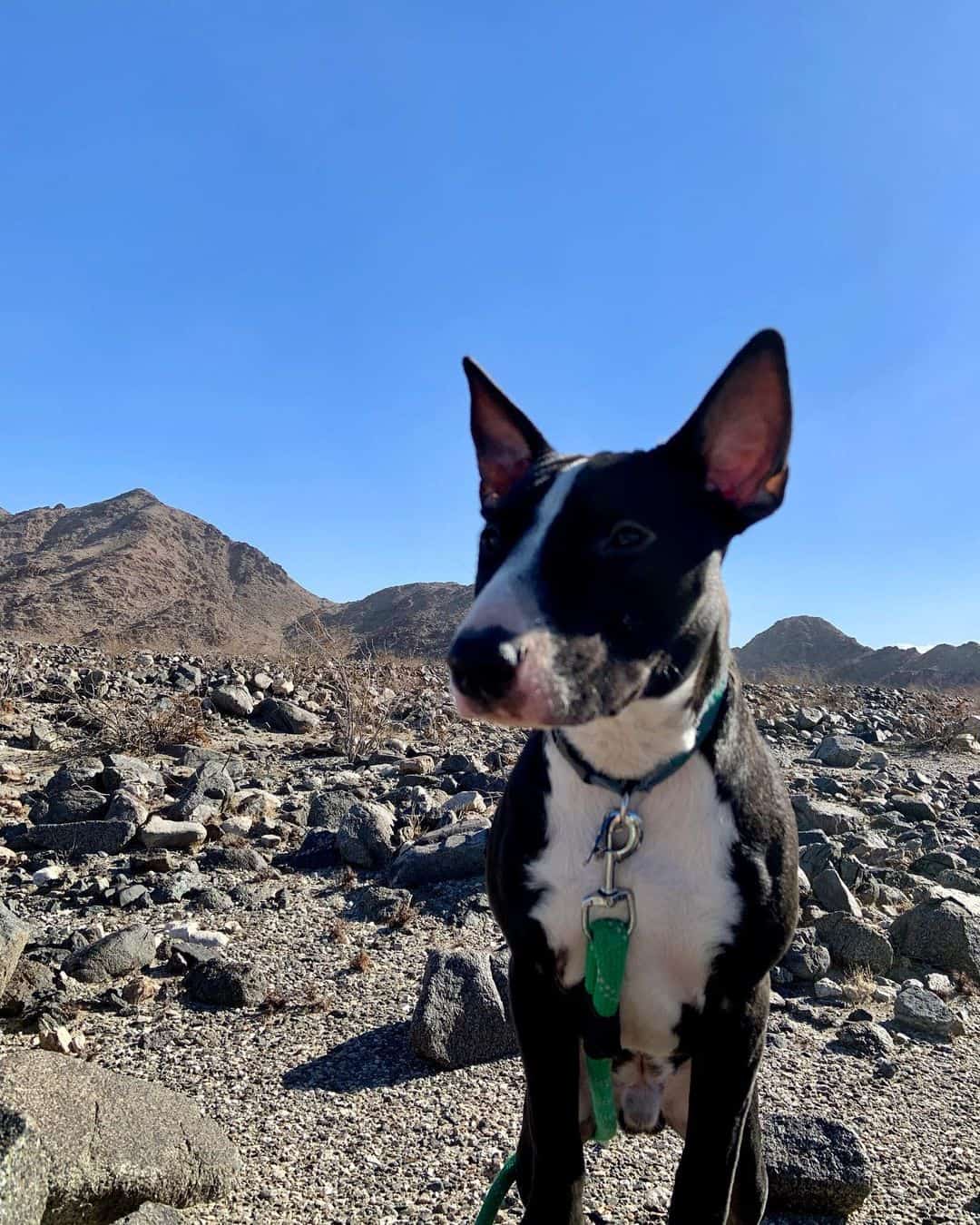
Unfortunately, the price of the Bull Pit puppy is not uniform. It can go anywhere between $800 and $3000.
On the other hand, the average price of a Pit puppy revolves between $1000 and $3000, while the average price of a Bull Terrier puppy revolves between $500 and $3500.
Generally, the price of these canines depends on several factors: sex, age, coat color, and reputability of the breeder. It is highly likely that your future pet will cost significantly more at reputable breeders.
However, between shady puppy mills and high-quality breeders – you should always choose the latter!
It may seem that a puppy from a reputable breeder will cost you more at first, but the truth is you won’t need to spend so much money later.
That’s because their overall price generally includes their first vaccination and deworming, health exams, bloodline tests, puppy documentation, a microchip, a collar and a leash, dog toys, a blanket, and their first pack of food for adaptation.
On the contrary, you won’t get these things at backyard breeders, and you might as well spend some more on healthcare and additional supplies.
Additional Costs
Aside from the initial price, there are several other things that you need to take into consideration. For starters, you should probably consider purchasing a dog bed for your puppy to avoid extra cleaning.
Furthermore, purchasing a potty, as well as poop bags is a must if you want to keep your house clean. Poop bags, on the other hand, are necessary on walks and outside training.
Food and water bowls are also necessary, but not that expensive as the average price for a bowl is around $5 to $10. Additionally, spending money on healthy snacks is as equally important as buying dog food.
Snacks will be a fantastic positive reinforcement tool as long as you give them to your puppy reasonably.
Dog training collars are additional supplements that you may need in the future. They will help you during socialization and obedience training.
Furthermore, you should consider getting pet insurance for your puppy. If we assume that Bull Pits are not exactly the healthiest dogs in the world, then having pet insurance wouldn’t be the worst idea.
If you are a true dog enthusiast, and you happen to travel a lot – then getting a puppy passport is probably something that you need to consider. The price of a dog passport depends on the state, and it can cost you anywhere between $100 and $500.
FAQs
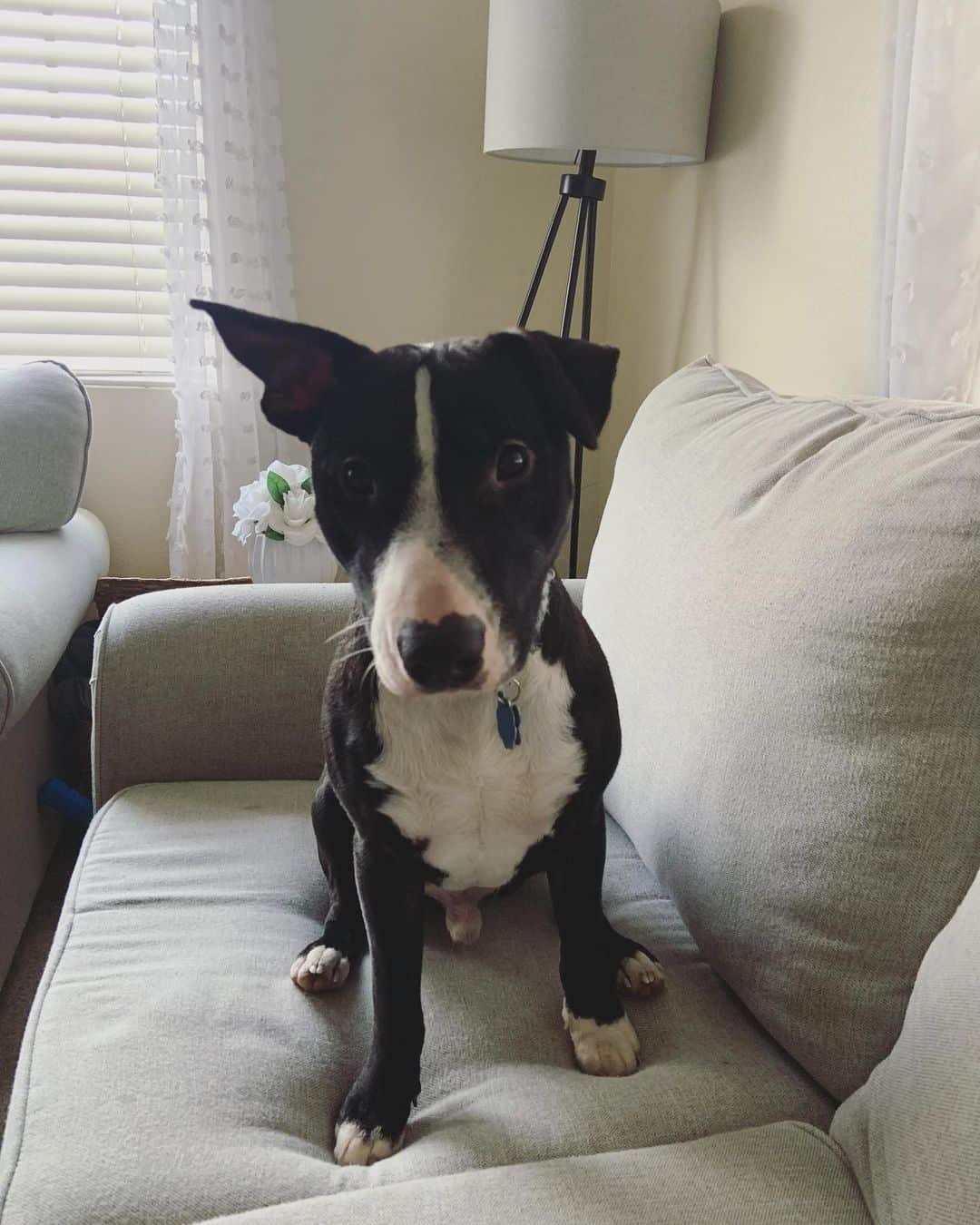
Indeed, these pooches qualify among the most reliable family pets in the world! In fact, Bull Terrier puppies are known to be in the club of the best family dogs, which makes their offspring, the Bull Pit, even more favorable.
These puppies are affectionate, loyal, and attention-seeking. They may be stubborn and mischievous at times, but that’s just part of their charm.
However, all Bull Pits require early socialization and obedience training in order to remain calm and friendly. Improperly-socialized puppies can display behavioral outbursts, and they may be aloof with strangers.
Also, the breed is not exactly the friendliest type towards other pets, which is why you should consider purchasing some other puppy in case you have more pets in the house.
These purebred canines are often misperceived and misrepresented as they have a violent history.
However, the truth is that Pit puppies are generally not aggressive, neither towards owners or towards strangers.
What makes them join the club of aggressive dog breeds is improper breeding and inexperienced owners.
This breed does require firm, but loving parenting. They don’t respond positively to yelling or screaming. In fact, these canines will most likely reciprocate with bad leadership.
Other things that can be a trigger for aggressiveness in Pit dogs are separation anxiety and lack of socialization. Generally, all puppies need early socialization in order to adapt to family life.
However, bully breeds, such as Pit Bulls have a high prey-drive, which makes the socialization process even more necessary.
Generally, these dogs live between 12 and 14 years. On the other hand, ‘‘how long do Pitbulls live’’ is a pretty big dilemma. This is due to their medical history as Pits are known for their common heart disease.
Still, with proper maintenance, these purebred dogs can live up to 14 years themselves.
However, many Pit puppies die between 8 and 10 years of age.
On the other hand, Bull Terrier puppies live between 12 and 14 years.
Pit puppies are generally larger than their Bull Terrier counterparts. The latter has an egg-shaped head, and short, erect ears.
On the other hand, Pit puppies have a striking head, with triangular ears, and their body is more muscular than in Bull Terrier puppies.
These two breeds differ in temperament, too. Pit puppies are known to be calmer, better with small children, and more loyal to their owner.
On the other hand, their Bull counterparts are generally more mischievous and stubborn, and they don’t have such a high level of tolerance.
The latter puppy is more active, which makes the breed less desirable in a house than a Pitbull.
However, both of these dogs make decent guardians of their families, and they will do anything to protect their loved ones. With proper socialization and obedience training, both of these dogs make decent pets.
Wrapping It Up
The Bull Terrier Pitbull mix is not a hybrid that you can see every day. This is due to the fact that these puppies are not for everyone as they require firm leadership and an experienced owner. Consequently, the breed is not recommended for first-time dog owners.
However, this magnificent, powerful, and charming crossbreed makes a wonderful family addition once it undergoes the socialization process. If you are an active, sporting person who loves spending time outdoors – this puppy will be perfect for you!
Read next: What Makes The Boston Terrier Pitbull Mix So Special?
